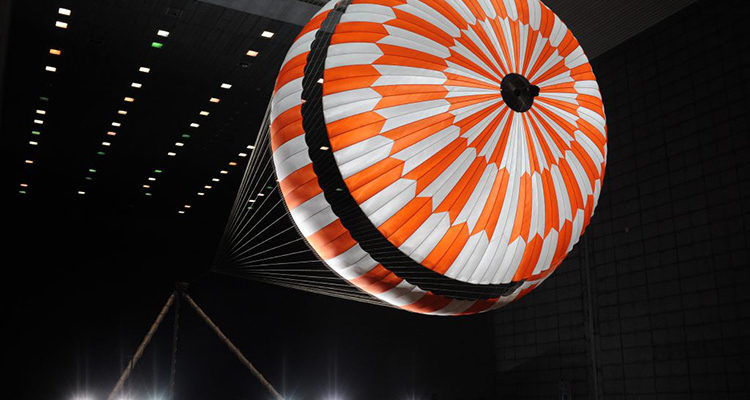The Mars Perseverance Rover is carrying the heaviest payload yet in its latest mission to seek signs of past life on Mars and to gather rocks and soil to be analyzed upon its return. The landing parachute of the Rover needs to be ready to deal with the extreme conditions on Mars, including temperatures of -63°C, strong dust storms, and atmospheric electricity, along with supporting the inflation load of nearly 70,000 lbs. Parachute developers, Airborne Systems and NASA’s Jet Propulsion Laboratory, turned to Teijin for the para-aramid needed to do the job.
Teijin’s Technora® is used in the parachute’s suspension cords and riser, offering the strength and durability needed to complete this crucial mission. Technora® boasts a successful history with NASA, also being used in the Mars Curiosity Rover in 2012 allowing a safe landing while withstanding a 9G force.
The parachute for the Perseverance Rover underwent extensive testing to ensure that it is up to the challenging task at hand, including wind tunnel testing at NASA’s Ames Research Center and testing creating Mars-relevant conditions using Black Brant IX sounding rockets launched from NASA’s Wallops Flight Research Facility. In the final flight test, the parachute was exposed to a 67,000-pound load — the highest ever survived by a supersonic parachute.


